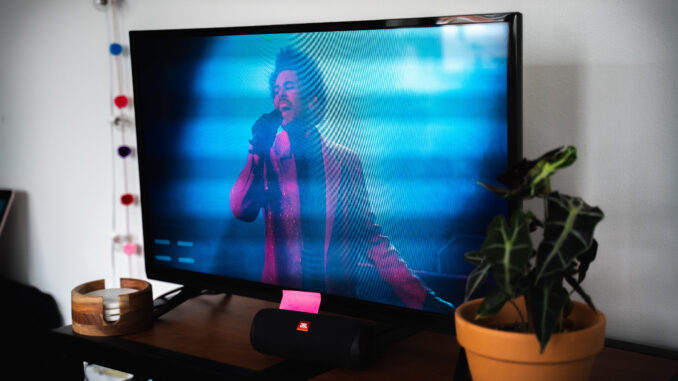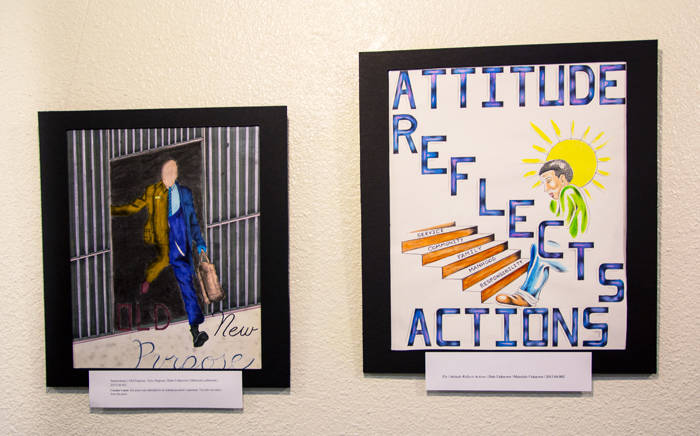
Capri Scarcelli
a&e editor
2/11/21
It doesn’t matter who performs, what they sing, what they wear or how they dance — there is always going to be extensive criticism when it comes to the Super Bowl halftime show.
Taking the field in “blinding lights,” The Weeknd performed a soloist repertoire that progressed in a narrative he has been brewing for months since the release of his 2020 album, After Hours.
Each dancer wore a bandaged mask that covered the whole face except for the eyes, setting an ominous tone and making the choreography appear ritualistic and borderline satanic.
This was done to visualize the plights of Hollywood’s expectations, and how conformity forces celebrities to execute multiple “versions” of themselves throughout their career, hence the plastic surgery motif throughout the course of the show. The dancers reflected this notion as the choir and instrumentalists in the stadium seats were the jeering audiences he faces in real life.
From violin soloists to animated backup vocalists, the sit-down performers were much like on-lookers, overseeing The Weeknd’s performance as he theatrically presented himself as if he was the only one on that field.
The set was simplistic, though got the job done. This garnered some backlash for how gaudy the stadium usually is for Super Bowl shows, but The Weeknd said he was “looking to tell a story.” Not like he had much of an option anyway, since people seem to forget we’re still in the midst of a pandemic.
Starting the halftime show with “Starboy,” the bright red lighting, choreography and vocals were bold, setting the bar high to carefully transition to his older hit, “The Hills.”
By this point, the stage goes mostly dark, focusing on The Weeknd’s chilling lower range and calculated movement, almost mechanical. Oddly enough and awkwardly timed, he paused the show to make a point of him walking off the field into a random exit, which confused audiences and made people feel like the show was already over.
However, The Weeknd finds himself in a gold-metallic mirror room, running through hallways with a poor-quality fish lens in selfie-mom mode. This, of course, took straight to Twitter with a stream of memes, becoming the official Super Bowl LV highlight with humorous close-up shots of The Weeknd’s face later used as reaction photos.
This set the stage for “Can’t Feel My Face,” where The Weeknd then got swarmed by the bandaged dancers, dizzying audiences as they ran circles around him like wasps on the prowl.
I certainly laughed a lot at this part, but I think it fit the buzzing energy of the song.
Returning to the stage, The Weeknd kept the middle of the setlist simple and traditional in style, treating the show like a regular performance rather than garnishing it with elaborate props, costume changes or daring choreography, hence the transition to “I Feel It Coming.”
I think he did this to allude to a sense of normalcy with performing outside of the pandemic again, which many artists have been longing for.
The cityscape background with the glittering lights, paired with his sparkly red suit made for a great pair in both “Save Your Tears” and “Earned It.”
These two songs were more for himself than for the audience members, skating away from his hit singles and focusing more on the plotline he was trying to tell.
With the background performers echoing the somber energy, there was much detail to pay attention to, but so subtle it was hard to tell what was being conveyed. The Weeknd was portraying an image of loneliness in the music industry and how he worked his way from the bottom to the top, but it flew over the audience’s heads. How can we be distracted by such simplicity? Was that done on purpose for the message he was trying to convey?
Before we could even question it, the music seems to abruptly shift gears into the lulling, yet eerie “House of Balloons/Glass Table Girls.” It truly seemed like a scene out of Michael Jackson’s “Thriller,” music video, but more unsettling and synchronized into chaos. The dancers took up the whole field as the instrumentalists swooned in the background, with The Weeknd passing through the center of the choreography almost strutting, like he was leading an apocalyptic battle cry.
Super Bowl viewers aren’t really used to anything but feel-good moments in a halftime show performance, so this came as a shock to viewers — especially when the circling dancers and chorusing echo transitioned to “Blinding Lights.”
This song topped the charts for four weeks straight, and for good reason. Catchy, blaring and bright, the chorus swelled with energy, though the choreography consisted of simple sixth grade chorus pivots. Surely this put more focus on his vocals, but I’m confused as to why there seemed to be no effort put into this performance.
In fact, The Weeknd spent $7 million of his own money to prepare for this night, so where did the money go?
He sang without pre-recordings or autotune, but you couldn’t hear him through the mic.
His dancers were in perfect sync, but I’ve done more complicated work in my days in the drama guild ensemble.
The sit-down choir/instrumentalists were cool in theory, but why were they bouncing around awkwardly and taking away from the precision of the performance?
The Weeknd wanted to tell a story, but he chose the wrong audience to tell it to; beer-bellied dads and TikTok teenagers don’t always have the greatest attention-to-detail skills.
Perhaps us not understanding was the whole point he was trying to make: The struggle of making music an art again is more prevalent now than ever.




